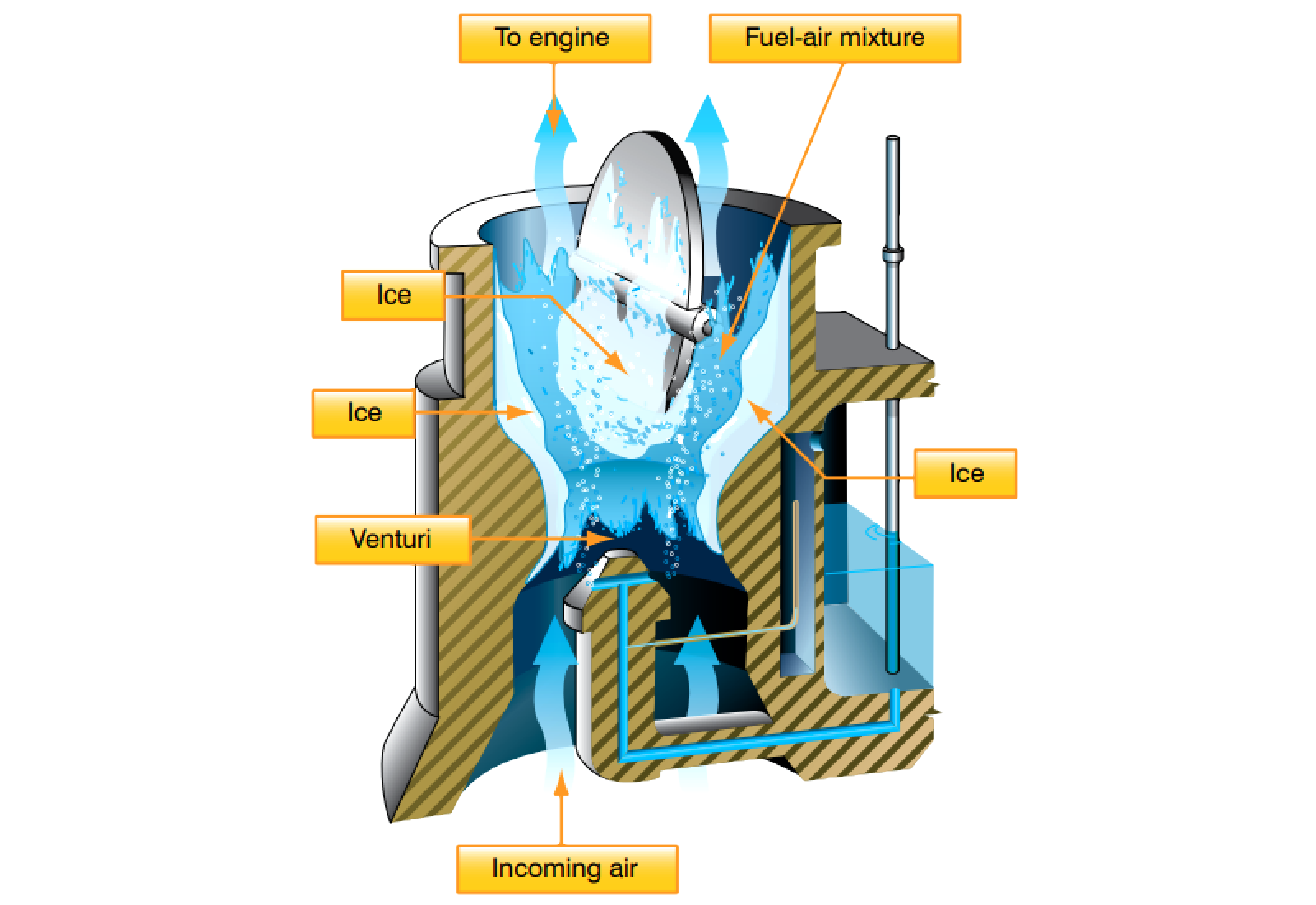Carburetor Icing

by
Posted
YESTERDAY I was out flying with a student doing some dual simulated instrument time – “hood time”. We were flying the localizer for runway 26 at CYTZ, remaining at 2000 feet altitude (because runway 08 was in use and there was another aircraft flying circuits). All in all we spent about an hour going backwards and forwards examining how to track the needle both inbound and outbound. And, we were doing it at a moderate-to-low power setting.
As we flew along I noticed the engine was getting “lumpy” – not rough exactly, but less smooth than usual. Eventually I though I should look into it. It wasn’t a magneto problem, so then I thought I’d check for carburetor icing. Hey-presto, lumpy engine fixed, along with a 2-300 increase in RPM by pulling the carb-heat ON. Once the ice had cleared selecting carb-heat OFF produced another 2-300 rpm increase, so for the same throttle position the ice had cost us about 500 rpm drop in power. After that we flew the remainder of the flight with the carb-heat on, and there were no further issues.
Something that made the icing harder to spot was that my student was (correctly) making power adjustments throughout the exercise; the drop in power was masked by his simply opening the throttle further.
Atmospheric conditions were classically appropriate for the formation of carburetor ice: the outside air temperature was about 5°C, and the air was damp: at our altitude and to the north and over the downtown core there was a thin layer of cloud, so where we were the relative humidity was certainly high.
Here’s a video clip from the flight; watch the RPM rise when I pull the carb-heat to ON and the ice melts, then rise again when I select OFF, as we return to cool outside air rather than heated air. Then my student has to make a power reduction with the throttle to bring the RPM back to where he wanted it. Finally I select carb-heat ON again, for the remainder of the flight.
NOTE: Because the engine noise isn’t recorded on the video (which is usually a good thing) you can’t hear the change in RPM – you’ll have to look carefully at the tachometer (just below the VSI) to see it.